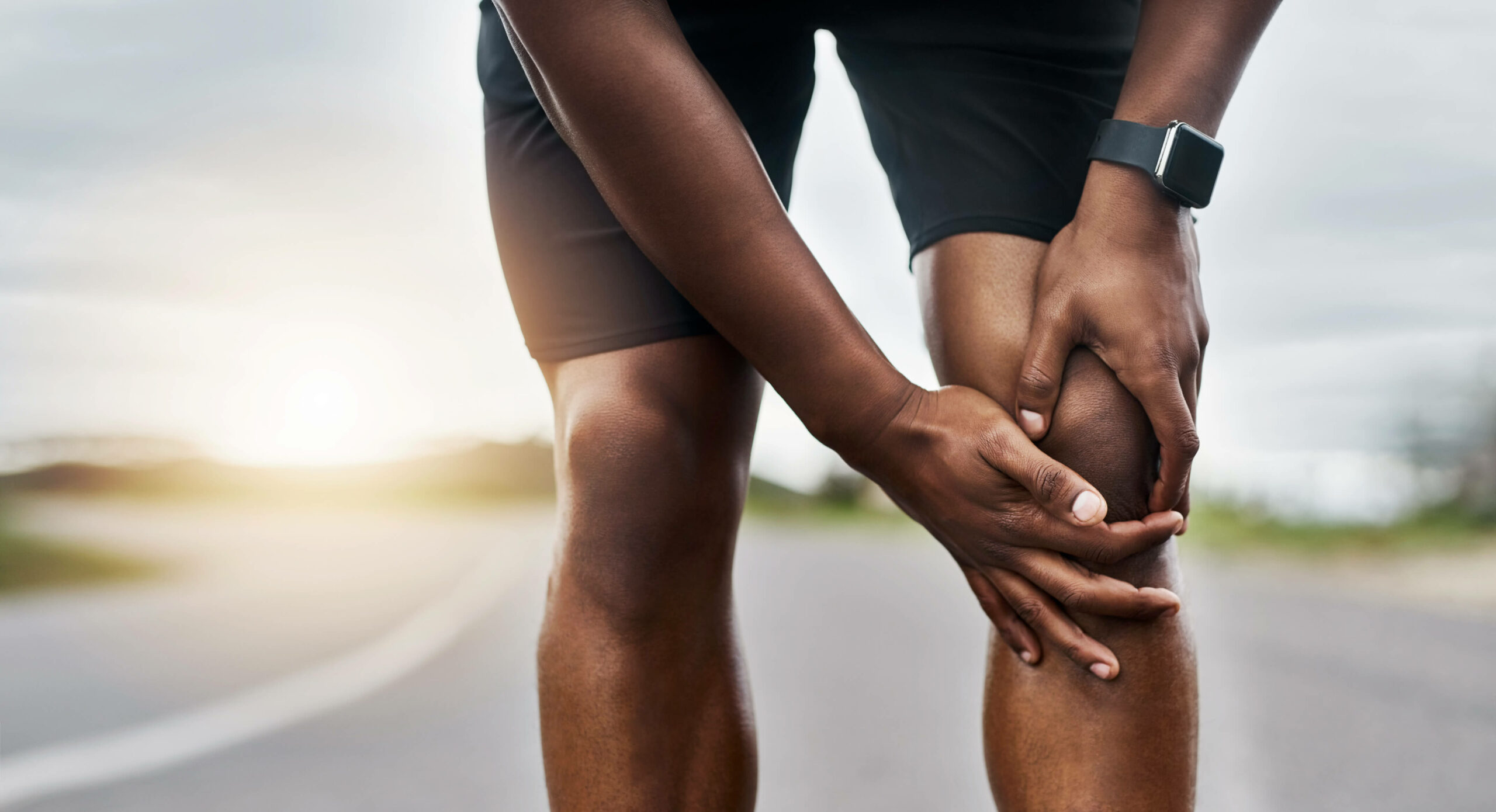Knee Pain Conditions
Find Long-Term Relief Without SurgeryKnee Pain
Your knee joint is made up of bone, cartilage, ligaments and fluid. Muscles and tendons help the knee joint move. When any of these structures is hurt or diseased, you have knee problems. Knee problems can cause pain and difficulty walking. There are several knee related injuries that can cause knee pain and the most common cause of knee pain, osteoarthritis.
No-Cost Knee Pain Consultation Request
Conditions We Treat
Knee Clicking
If the clicking is causing you pain or making it difficult to move then it is important to seek medical attention to determine whether or not you suffering an injury that could be causing damage to your body. Your doctor will examine your knee to determine what is causing the clicking noise to help narrow down what kind of treatment is appropriate.
Knee Tendonitis
Knee tendonitis is an injury to the tendon connecting your kneecap (patella) to your shinbone. The patellar tendon works with the muscles at the front of your thigh to extend your knee so you can kick, run and jump. Patellar tendonitis usually begins with a stiff feeling in the patellar tendon, especially when running downhill or descending stairs. Like most tendon injuries, it may go away once you get warmed up, but as the injury worsens, it will remain painful for the duration of your workout.
Locked Knee
As the knee moves around, if the flap is large enough it can get wedged in the wrong position, blocking the joint and causing knee locking. A meniscus tear can be caused by an injury, usually from a twisting movement or from gradual wear and tear on the joint. You can find out more in the meniscus tear section.
Osteoarthritis
Sometimes called degenerative joint disease or “wear and tear” arthritis, osteoarthritis (OA) is the most common chronic condition of the joints. It occurs when the cartilage or cushion between joints breaks down leading to pain, stiffness and swelling. pain. OA most commonly affects joints in your hands, knees, hips and spine. The most common symptoms of osteoarthritis are stiffness, particularly first thing in the morning or after resting, and pain. Affected joints may get swollen especially after extended activity.
Primary osteoarthritis. Considered “wear and tear” osteoarthritis, this type of osteoarthritis is more commonly diagnosed.
Secondary osteoarthritis. This type of osteoarthritis has a specific cause, such as an injury, an effect of obesity, genetics, inactivity, or other diseases. It tends to strike at an earlier age, around 45 or 50.
Meniscus Pain & Tear
A meniscus tear is a common knee injury. The meniscus is a rubbery, C-shaped disc that cushions your knee. Each knee has two menisci (plural of meniscus)-one at the outer edge of the knee and one at the inner edge.
There are three types of meniscus tears. Each has its own set of symptoms.
With a minor tear, you may have slight pain and swelling. This usually goes away in 2 or 3 weeks.
A moderate tear can cause pain at the side or center of your knee. Swelling slowly gets worse over 2 or 3 days. This may make your knee feel stiff and limit how you can bend your knee, but walking is usually possible. You might feel a sharp pain when you twist your knee or squat. These symptoms may go away in 1 or 2 weeks but can come back if you twist or overuse your knee. The pain may come and go for years if the tear isn’t treated.
In severe tears, pieces of the torn meniscus can move into the joint space. This can make your knee catch, pop, or lock. You may not be able to straighten it. Your knee may feel “wobbly” or give way without warning. It may swell and become stiff right after the injury or within 2 or 3 days.
If you are older and your meniscus is worn, you may not know what you did to cause the tear. You may only remember feeling pain after you got up from a squatting position, for example. Pain and slight swelling are often the only symptoms.
Hyperextension of the Knee
A PCL injury is sometimes referred to as an “overextended knee.”
The posterior cruciate ligament (PCL) is the strongest ligament in the knee joint. Ligaments are thick, strong bands of tissue that connect bone to bone. The PCL runs along the back of the knee joint from the bottom of the thighbone (femur) to the top of the lower leg bone (tibia).
The PCL helps keep the knee joint stable, especially the back of the joint. An injury to the PCL could involve straining, spraining, or tearing any part of that ligament. The PCL is the least commonly injured ligament in the knee.
At Georgia Medical Treatment Center we offer multiple non-surgical knee therapy options. In addition, we offer a no-cost knee consultation to help determine which knee therapy best fits your mobility goals.
Why Suffer? Get Knee Pain Relief
There are several knee related injuries that can cause knee pain and the most common cause of knee pain, osteoarthritis. We provide a range of non-surgical knee programs that can help alleviate pain and prevent the need for surgery.
At Georgia Medical Treatment Center, your comfort and health are our top priorities! Have knee issues? Let us diagnose and treat them before they become worse. Learn more about our advanced treatments for knee pain.

